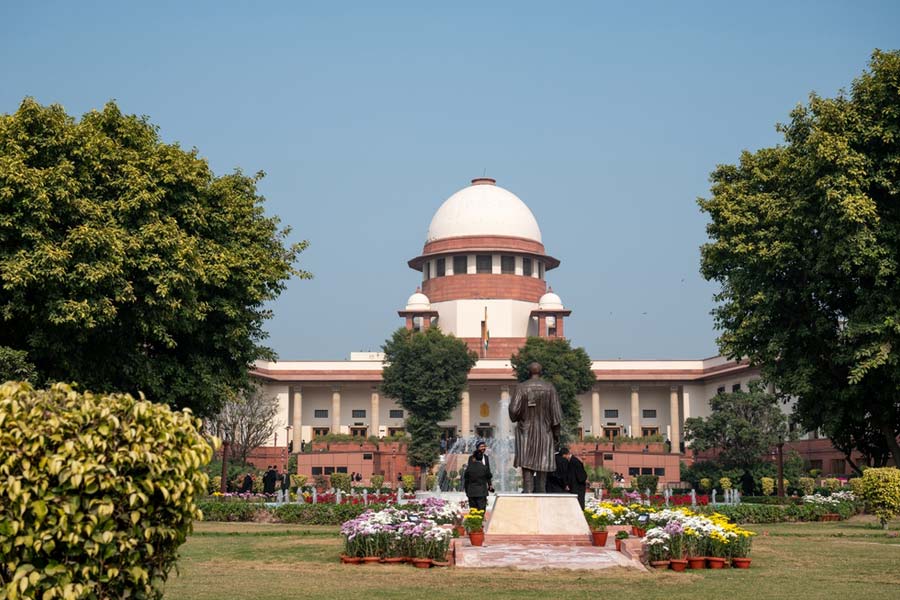Half life
By V's. Naipaul,
PIcador, £15.99
The hero of Half a Life is a Brahmin boy with the improbable name of William Somerset Chandran. He detests the stifling murk of Indian small town life and tries out an author's career in London. Running into a block after a single book, Chandran escapes with his lone female fan to Mozambique, her country, about to be freed from Portuguese rule. He is scared to unpack his bags anywhere, most so in colonial Africa. It takes eighteen years of creative lull, broken by the odd sexual squall, before he can leave her.
Story to Naipaul has seldom been more than .events which are properly speaking accidents only., a phrase from Conrad he approvingly cites in the essay, Reading and Writing, published last year.The first part of Half a Life, however, is fairly eventful. Poverty, in a land ravaged by Muslims, drives Chandran's great grandfather to the sanctuary of a temple yard, his grandfather rises to be an official in the local raja's court, and his father, inspired by Gandhi, burns his English literature texts and marries a sly and unprepossessing lower caste girl. The match unleashes a storm, to escape which Chandran's father turns into a mendicant vowed to silence.
The Brahmin's bluff is not unlike that of the Muslim traveller, Ibn Batuta, whose use of the mendicant's guise to fool the sultan of Delhi Naipaul mentions in Reading and Writing. It is at this point that Somerset Maugham comes to meet him. The novelist is in search of Indian spirituality, and is so impressed by the holy man's evasive scribbles that he makes him a central figure in The Razor's Edge.Which explains the hero's name and his disgust with his father's fake renown for sanctity.
The India of this part is fabulous and vague, leaning heavily on Naipaul's pet thesis on the wounds of Hindu civilization. The second section moves to London. It repeats the familiar Naipaul tale of the unsure colonial immigrant and of his shame and guilty ambition. There are other autobiographical markers: the primal scene of hurried sex on a stained mattress under a naked light bulb, the acute distaste for English upper-class humbug, the stories written under the spell of Hollywood films, the comfort of a fabricated past and of a distanced authorial persona. Unlike Naipaul, however, Chandran shies away from the tough questions writing leads him to, and seeks refuge in love and in Africa.
Mozambique brings Chandran more shame and guilt, this time because of his incapacity for love.The best thing in this last chapter is the parodic portrayal of the Portuguese and half-caste colonial elite, weakly insulated from the shadowy and menacing sea of black Africans surrounding them. J.M. Coetzee complains that Naipaul's Africa is at heart no different from Conrad's.Within the fictional framework, however, Chandran's sense of an unspeakable mystery in the black women he sleeps with is understandable. If he seems to be repeating Maugham's error of finding .a special spiritual quality in the special Indian distress., he also avoids foisting a tidy meaning on the Africa that eludes his comprehension.
Half a Life comes at a wrong time. The Nobel award will make this most recent of his books the first by Naipaul that many will read, but it is unlikely to win him new enthusiasts. For seasoned readers, the novel will be a disappointment in the way a minor work by a major author usually is . typical of the man, but short on the qualities that had made the writer admirable.
Is it just to make that distinction between man and writer? Admirers of Naipaul warn that we should not fault his writing because he is a bad dinner guest.We must not mind Sir Vidia's opinions, they tell us, and should forget our postcolonial hang-ups in order to enjoy his splendid prose. Besides dismissing four decades of troubled engagement with the colonial question, such superior preciosity insults Naipaul's exalted idea of the writer's function. .Man and writer were the same person,. Naipaul had declared in The Enigma of Arrival. .But that is a writer's greatest discovery. It took time . and how much writing! . to arrive at that synthesis..
Half a Life is at best a flawed instance of that fusion. The anxiety about race and class that had dogged the Trinidad schoolboy is something that Naipaul admits he had always known and will know. The hurt moved us when raw, and there was something oddly convincing about Naipaul's utter unreasonableness. The sense of being let down by a mother country was authentic so long as the aspirant to metropolitan modernity was dismayed to find the same desires impelling the sad culture of mimicry in that mythical land. The grief for lost cultural possibilities rang true so long as there was a genuine longing for alternative cultural standards . never mind if at the same time the exile found them impossible to adopt.
Now that Naipaul looks back at false starts from the finishing line and writes with a knowing aloofness, that unreason and the fallacious faith of his .opinions. impede our response to his prose. A teller who has his mind made up sorts uneasily with a tale of self-making on the run, and the occasional switch to monologue does not help. For the same reason, the stained walls, peeling paint, chipped crockery, tasteless clothes, cheap furniture, scabbed skin, bad teeth, . the debris of derelict cultures that Naipaul inventories in every other book . begin to read like a hygienist's peeve.
In Reading and Writing, Naipaul speaks of the two dark spheres that had separated him from his colonial education. These were his childhood world of a remembered India, and the world of the colonial city. The spheres of darkness became his subjects.This is still true of Half a Life, but they seem to have lost the sun-flickered spaces that had redeemed their darkness in the past.
 Tuesday, 17 June 2025
Tuesday, 17 June 2025










